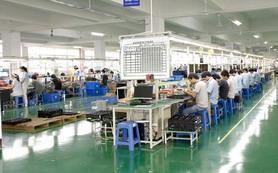 In the security industry, the process of product development varies significantly depending on the R&D level. Each stage has its own unique characteristics, challenges, and benefits. Understanding these levels helps companies make informed decisions about their R&D strategies and long-term growth.
At the **chip-level**, companies focus on developing the core components that power their products. This level requires a high level of technical expertise, substantial investment, and a long development cycle. While it offers full control over critical technologies, it is also one of the most challenging stages. In China’s security industry, chip-level R&D is still in its infancy. Most of the key technologies are controlled by foreign firms, and domestic companies often lack both the skilled personnel and the financial resources needed to compete effectively at this level. As a result, many system integrators struggle to develop their own chips, relying instead on imported solutions.
Moving up to the **module-level**, companies focus on building standardized components that can be used across multiple products. These modules often include hardware and embedded software, allowing for faster and more efficient product development. However, module-level R&D demands strong technical capabilities and significant capital. In the current Chinese security market, few companies have the resources or expertise to conduct in-house module development. As a result, many rely on overseas suppliers from Japan, South Korea, Europe, and the U.S. This dependency highlights a major gap in the industry, where core technologies remain out of reach for many domestic firms.
At the **product-level**, companies either develop standalone products or integrate multiple functions into comprehensive systems. Independent product R&D allows for greater flexibility and user independence, while integrated solutions focus on creating cohesive system offerings. Historically, many security companies focused on single-product development due to low entry barriers and limited R&D capabilities. However, as the industry matures, leading manufacturers are now expanding their product lines and adopting modular approaches. Some companies now offer thousands of different security products, reflecting a shift toward more sophisticated and diversified product portfolios.
Finally, **system-level** R&D involves creating comprehensive software platforms that support various applications and industries. For system integration companies, the software platform is often the heart of their operations. These platforms enable customization and deep integration with different business needs. Over the past few years, as large-scale network monitoring systems have become more common, both manufacturers and integrators have shifted toward becoming solution providers. The ability to deliver custom software platforms has become a key differentiator in competitive projects, making it a central focus for many companies.
In summary, each level of R&D in the security industry presents unique opportunities and challenges. As domestic companies continue to grow and invest in innovation, the hope is that they will gradually reduce their reliance on foreign technologies and build stronger, more self-sufficient R&D ecosystems.
In the security industry, the process of product development varies significantly depending on the R&D level. Each stage has its own unique characteristics, challenges, and benefits. Understanding these levels helps companies make informed decisions about their R&D strategies and long-term growth.
At the **chip-level**, companies focus on developing the core components that power their products. This level requires a high level of technical expertise, substantial investment, and a long development cycle. While it offers full control over critical technologies, it is also one of the most challenging stages. In China’s security industry, chip-level R&D is still in its infancy. Most of the key technologies are controlled by foreign firms, and domestic companies often lack both the skilled personnel and the financial resources needed to compete effectively at this level. As a result, many system integrators struggle to develop their own chips, relying instead on imported solutions.
Moving up to the **module-level**, companies focus on building standardized components that can be used across multiple products. These modules often include hardware and embedded software, allowing for faster and more efficient product development. However, module-level R&D demands strong technical capabilities and significant capital. In the current Chinese security market, few companies have the resources or expertise to conduct in-house module development. As a result, many rely on overseas suppliers from Japan, South Korea, Europe, and the U.S. This dependency highlights a major gap in the industry, where core technologies remain out of reach for many domestic firms.
At the **product-level**, companies either develop standalone products or integrate multiple functions into comprehensive systems. Independent product R&D allows for greater flexibility and user independence, while integrated solutions focus on creating cohesive system offerings. Historically, many security companies focused on single-product development due to low entry barriers and limited R&D capabilities. However, as the industry matures, leading manufacturers are now expanding their product lines and adopting modular approaches. Some companies now offer thousands of different security products, reflecting a shift toward more sophisticated and diversified product portfolios.
Finally, **system-level** R&D involves creating comprehensive software platforms that support various applications and industries. For system integration companies, the software platform is often the heart of their operations. These platforms enable customization and deep integration with different business needs. Over the past few years, as large-scale network monitoring systems have become more common, both manufacturers and integrators have shifted toward becoming solution providers. The ability to deliver custom software platforms has become a key differentiator in competitive projects, making it a central focus for many companies.
In summary, each level of R&D in the security industry presents unique opportunities and challenges. As domestic companies continue to grow and invest in innovation, the hope is that they will gradually reduce their reliance on foreign technologies and build stronger, more self-sufficient R&D ecosystems.Gate valves are multi-purpose bi-directional shutdown valves for the widest industries applications. Gate Valve, electric gate valves, pneumatic gate valves, gas over oil gate valves are easy to control in various working environments.
Gate Valve, electric gate valves, pneumatic gate valves, gas over oil gate valves
Zhejiang Philic Fluid Control Co.,LTD , https://www.philicflow.com
Previous: Introduction to the sun god